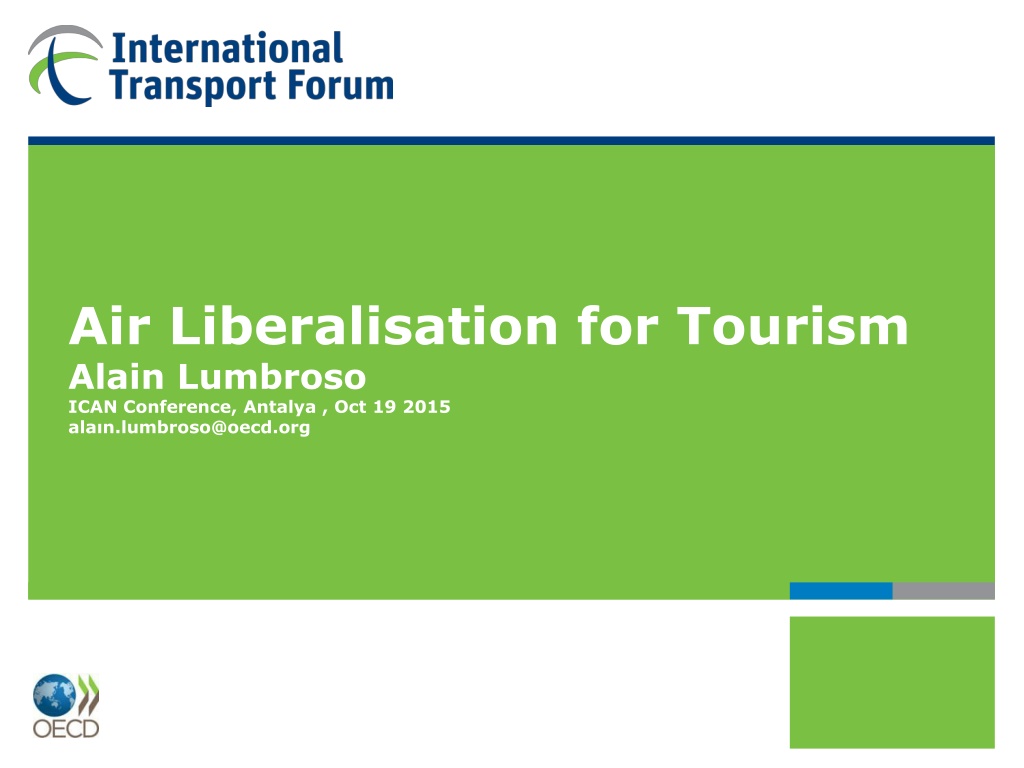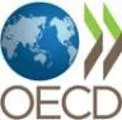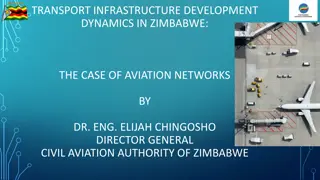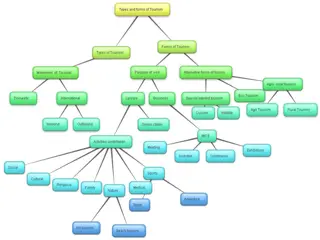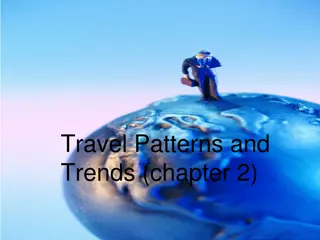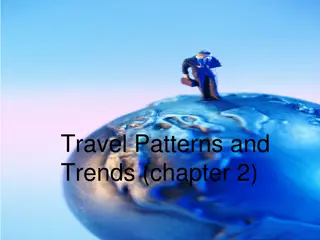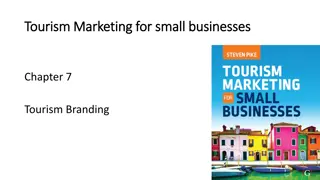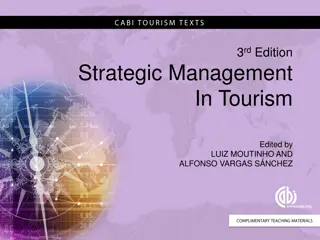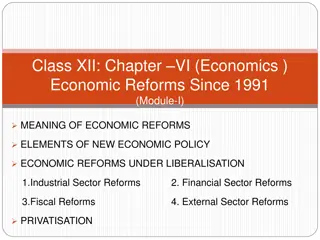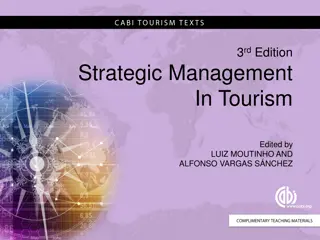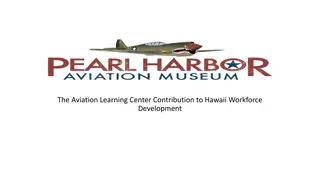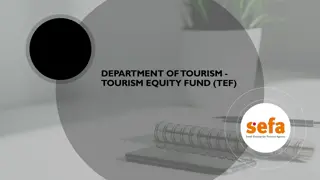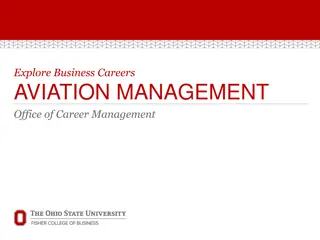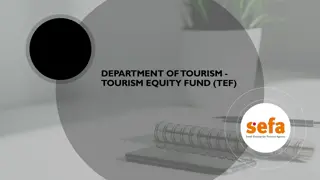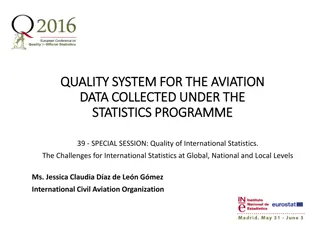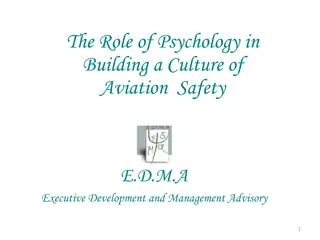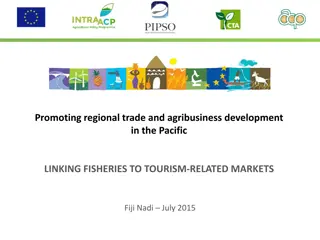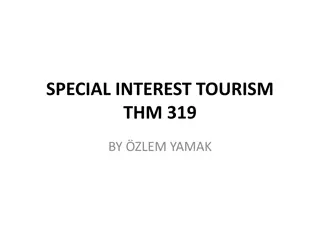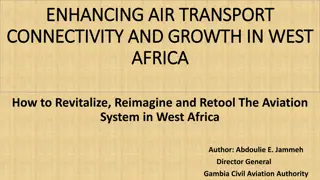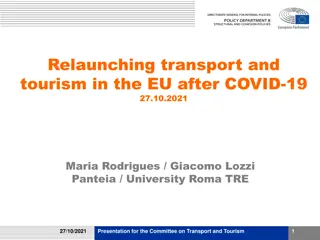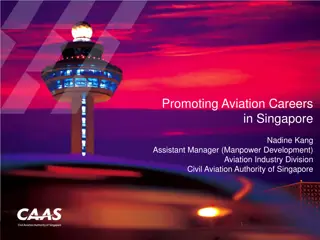Role of Aviation in Tourism Liberalisation and Development
Explore the significance of aviation in tourism liberalisation through insights on the International Transport Forum, tourism impact on GDP, employment, and exports, tourists' preferences for freedom in air travel, and a comparison of aviation with other tourism services. The content delves into the key aspects of the aviation industry's role in enhancing global tourism experiences.
Download Presentation

Please find below an Image/Link to download the presentation.
The content on the website is provided AS IS for your information and personal use only. It may not be sold, licensed, or shared on other websites without obtaining consent from the author. Download presentation by click this link. If you encounter any issues during the download, it is possible that the publisher has removed the file from their server.
E N D
Presentation Transcript
Air Liberalisation for Tourism Alain Lumbroso ICAN Conference, Antalya , Oct 19 2015 ala n.lumbroso@oecd.org
2 What is the ITF? 57 member countries (34 OECD + 23 non-OECD) Active in all modes of transportation Housed at the OECD Council of Ministers of Transport, rotating annual presidency Legal instruments: European Multilateral Quota System Presently preparing for expansion of membership
3 Annual Summit Ministerial Meeting and Declaration from Ministers Ministers Roundtables Panel Discussions with Ministers, Industry, Research, Civil Society Bilaterals and Networking Exhibition 1100 participants (2015) 2015 Summit theme: Tourism, Trade and Transportation
4 What is a Tourist? Tourism is travel for recreation, leisure, religious, family or business purposes, usually for a limited duration -- Wikipedia In other words, except for migration, all air passengers are tourists! Tourism is growing worldwide because: Income growth in develloping and emerging economies; Lower air fares; Better connectivity; Ease of travel
5 Tourism: Does it matter? Hint: yes!!! In 2012, it represented in the OECD: 4.7% of GDP (direct); 9% of GDP (direct + indirect + induced) globally: 10% 6% of employment - globally: 9% 21% of exports of services 1.1 B arrivals in 2014 to 1.4B in 2020 and 1.8B in 2030 (UNWTO); Air s market share expected to grow to 65% by 2030.
6 What is the tourist looking for? Freedom! Tourists are looking for the freedom to: Fly when they want; Fly from where they want; Fly to where they want; Fly with whom they want; Trade price for quality; Whilst enjoying the highest levels of safety Freedom!! There is only one freedom for tourists: Freedom to fly!
7 How does aviation compare to other tourism services? Aviation (Not OSA) Commercial Attractions National Monument Hotel Restaurant State-Managed Capacity State approval of prices Foreign ownership allowed Foreign control allowed Foreign f rm on domestic market Subsidised Yes No No No Yes Yes No No No Yes Limited Yes Yes Yes No No Yes Yes Yes No No Yes Yes Yes N.A. Yes No No No Yes Air transport still seen as a State-owned asset -Traffic rights belong to States
8 Air transport liberalisation and policy goals Tourism development is one policy goal; there are others!! Tourism must compete with other priorities; Weak voice for outbound tourism; Challenge for policy-makers is aligning several diverging and conflicting policy goals; A tourism lens applied to aviation liberalisation is very demand-centric; what about the supply side?
9 Research in Aviation Liberalisation Examined the issue of liberalised air markets from a wide variety of angles; Contracted 4 papers, formed a global working group, one discussion paper, one major research paper; Researched looked at all aspects of liberalisation, including traffic rights, ownership and control, subsidies, labour and the environment; Presentation of our research tomorrow afternoon.
10 Some f nd ngs with respect to tourism Liberalisation has always had a neutral or positive impact on demand; Demand driven more by price (LCC) than capacity; Markets with liberalised policy stance (US, UK, New Zealand, Morocco, Finland) all saw clear benefits to open markets; Once markets are open, little desire to close them.
11 Morocco A Case Study n L beral sat on Tourism oriented aviation policy as part of Vision 2010- Vision 2020; Target: grow intl arrivals from 4.3M to 20M 2000->2020; Open skies (with limited 5th) with EU in 2006; 70 new routes, 20 new carriers traffic grew from 6.6M to 11M 2006->2011; Increase in week-end tourism and repeat visits; RAM saw a drop in market share but increase in traffic; Morocco now #3 for flights to the EU
12 Parting Thoughts Can t grow tourism if tourists can t get there! Connectivity is key for economic development. Includes also land access (last mile); We have yet to find a counter-example where liberalisation hurt the tourism market; Liberalisation not just with source country but also transit countries; Liberalisation starts at traffic rights but doesn t end there!
